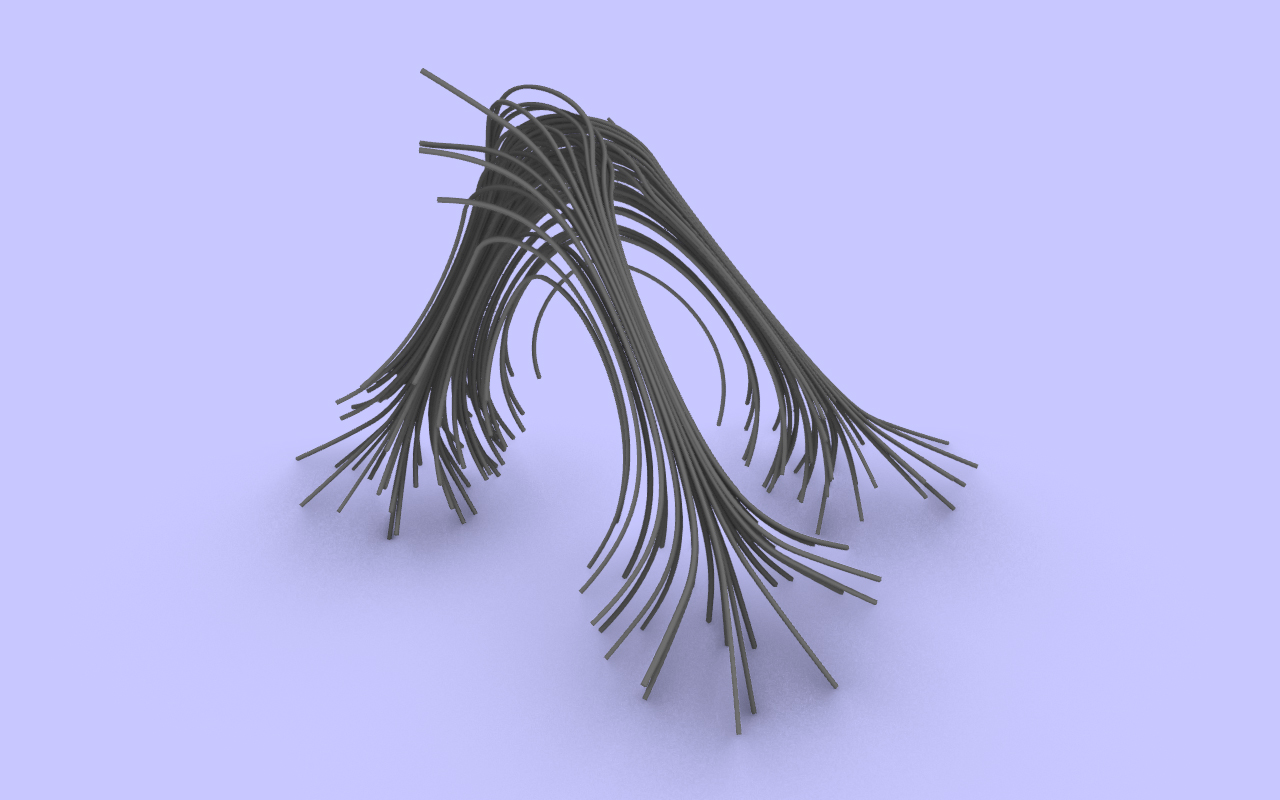
Pinch Force (Grasshopper Example)
This example uses the Fields Plus plugin developed at The Different Design. You can download the plugin here. This example looks closely at the Pinch Force component, which pinches field lines inwards and along the direction of an axis (defined by a line or vector).
The Field Plus Plugin is available to download for all Premium members of The Different Design.
Not a member? Sign up today!
Download the Pinch Force example file.
The grasshopper example:
This example uses a Geometry Pipeline component to reference any lines drawn in Rhino, which are used as axis inputs for the Pinch Force component. These axis take any field lines within a specified radius and attempts to push them in the direction of the axis. As the field lines travel parallel to the axis, they are pulled inwards to the midpoint of the axis, before pushing outwards towards the endpoint of the axis.
The starting points for the field line simulation are generated from a collection of random points on the XY plane in Rhino.

Snippets of the final algorithm showing the separation behaviour and point insertion
Producing different iterations:
This example can produce a variety of different outcomes by changing parameters such as the Pinch Force component’s Pinch (which controls the intensity of the pinch), Distance (which controls the distance the force affects any field lines) and the Strength (which controls the strength of the field relative to other fields in the simulation).
Adding extra axis’ and changing their location and direction will allow you to generate the form and direction and form of the field lines. Changing the starting points of the spiral force will also have a significant effect on the outcome.

A collection of iterations derived from the example by changing parameters and starting curves
Taking this a step further:
The component can be used with all field force and charge components to create more complex force fields. Try using it in combination with the Spin Force component, Point Charge component and Tangent Force component, and simulating it with a Field Line Discrete component or Field Line Grid component.
